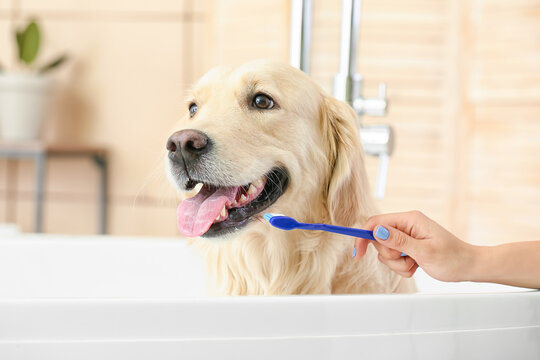Home pet care is more than just feeding and housing a furry friend. It’s about creating a safe and comfortable environment, providing the right nutrition and exercise, and ensuring proper grooming and hygiene. With the right tools, knowledge, and resources, home pet care can be a rewarding and cost-effective way to keep your pets healthy and happy. In this article, we’ll explore the benefits of home pet care, provide tips and techniques for grooming and hygiene, and offer insights into in-home pet services. Whether you’re a seasoned pet owner or just starting out, this guide will help you care for your pets like a pro.
Benefits of Home Pet Care
Home pet care offers numerous benefits for both pets and their owners. One of the most significant benefits of home pet care is the ability to create a safe and comfortable environment for your furry friends. You can pet-proof your home to eliminate potential hazards, set up a cozy living space, and establish a routine that caters to your pet’s needs. By providing a secure and comfortable environment, your pets can thrive and feel more relaxed at home.
Another benefit of home pet care is the ability to control your pet’s diet and nutrition. By feeding your pets at home, you can ensure they’re getting the right type of food and portion sizes, according to their age, breed, and health needs. This can help prevent obesity and other health issues, while also saving you money on pet food and treats.
Home pet care also provides ample opportunities for exercise and playtime. Regular exercise is essential for pets’ physical and mental health, and by engaging in fun, interactive activities at home, you can help your pets stay active and entertained. This can include playing with toys, teaching them new tricks, or simply taking them for walks around the neighborhood.
Finally, home pet care includes grooming and hygiene. Grooming your pets regularly helps keep them clean, healthy, and happy. By grooming your pets at home, you can save money on professional grooming services and establish a closer bond with your pets. This can involve brushing and combing their fur, bathing them, trimming their nails, and cleaning their ears.
Overall, home pet care offers numerous advantages, including cost savings, convenience, and the ability to provide your furry friends with a loving, safe, and healthy environment. With these benefits in mind, it’s easy to see why more and more pet owners are opting for home pet care over traditional pet care services.
Tips for Home Pet Care
Taking care of your pets at home requires creating a safe, comfortable, and stimulating environment to ensure their overall well-being. Here are some tips to help you get started:
Creating a Safe and Comfortable Environment
Creating a safe and comfortable environment for your pets is crucial. Here are some tips to help you get started:
- Pet-proof your home: Make sure your home is free from potential hazards, such as poisonous plants, toxic substances, and sharp objects. Keep your cleaning supplies and chemicals safely stored away from your pets.
- Set up a comfortable living space: Provide your pets with a comfortable sleeping area, and make sure they have access to fresh water, food, and toys. The sleeping area should be in a quiet, low-traffic location. Provide a comfortable bed, blankets, and pillows for your furry friend to rest on.
- Establish a routine: Create a daily routine that meets your pet’s needs, including feeding times, exercise, and playtime. Consistency is key to ensuring your pet feels safe and secure in their environment.
Feeding and Nutrition
Feeding your pets properly is important for their health and well-being. Here are some tips for feeding your pets at home:
- Select the right type of food: Choose a high-quality pet food that meets your pet’s nutritional needs. Consult your veterinarian about the specific dietary needs of your pet, as different pets may have different nutritional requirements.
- Portion control: Make sure you are feeding your pets the right amount of food each day to avoid overfeeding. Overfeeding can lead to obesity and other health issues.
- Avoid table scraps: Human food can be harmful to pets and can cause digestive issues. Avoid feeding your pets table scraps, and stick to pet food and snacks specifically formulated for their dietary needs.
Exercise and Playtime
Regular exercise and playtime are important for your pet’s physical and mental health. Here are some tips for keeping your pets active and engaged at home:
- Play fetch: Toss a ball or toy for your dog to retrieve. This is a great way to get your pet moving and exercising.
- Hide-and-seek: Hide treats or toys around the house for your pet to find. This can help stimulate their mind and keep them entertained.
- Provide toys: Offer your pets a variety of toys to keep them entertained and engaged. Toys can help prevent boredom, reduce stress, and provide mental stimulation.
Grooming and Hygiene
Grooming is an important aspect of pet care, as it helps keep your pets clean and healthy. Here are some tips for grooming your pets at home:
- Brushing: Brush your pet’s coat regularly to remove loose fur and prevent matting. This can also help distribute natural oils throughout their coat and prevent skin irritation.
- Bathing: Bathe your pets as needed to keep them clean and fresh. Use a pet-friendly shampoo and conditioner, and be sure to rinse thoroughly.
- Nail trimming: Trim your pet’s nails regularly to prevent them from getting too long. Overgrown nails can cause discomfort and even lead to mobility issues.
Dental Care
Dental care is a crucial aspect of pet care that is often overlooked. Here are some tips for maintaining your pet’s dental health:
- Regular brushing: Brush your pet’s teeth regularly with pet toothpaste and a toothbrush. This can help prevent dental disease and keep their breath fresh.
- Dental chews and treats: Offer your pets dental chews and treats to help clean their teeth and freshen their breath. Look for products that are specifically designed to promote dental health.
- Regular check-ups: Schedule regular dental check-ups with your veterinarian to prevent and treat dental disease. Regular check-ups can help catch dental issues early and prevent more serious problems from developing.
Insider Tips for Home Pet Care
Providing proper home pet care is essential for the health and happiness of your furry friend. Here are some insider tips from experienced pet owners that will help you provide the best possible care for your pets:
Provide Mental Stimulation
In addition to physical exercise, pets also need mental stimulation to stay happy and healthy. Consider offering puzzle toys or hiding treats around the house for your pets to find. This will keep your pet entertained, mentally stimulated, and less likely to engage in destructive behavior.
Use Positive Reinforcement
Positive reinforcement training is an effective and humane way to teach your pets new behaviors. Reward your pets with treats, praise, or playtime to encourage good behavior. This will help build a positive relationship between you and your pet while also promoting good behavior.
Monitor Your Pet’s Behavior
Regularly observe your pets’ behavior to identify any changes or signs of illness. This can include changes in appetite, activity levels, or bathroom habits. By monitoring your pet’s behavior, you can catch any potential health issues early and seek proper treatment.
Keep Your Pet’s Environment Clean
Regularly cleaning your pet’s living space is essential to prevent the buildup of bacteria and odors. This can include washing bedding, litter boxes, and toys. A clean environment will help keep your pet healthy and comfortable.
Stay Up-to-Date on Pet Care Trends
The field of pet care is constantly evolving, so stay informed on the latest trends and techniques to provide the best care for your pets. This can include attending pet care workshops, reading pet care blogs or magazines, and joining pet care groups on social media platforms. Staying up-to-date on pet care trends will help you provide the best care possible for your furry friend.
DIY Pet Grooming: A Step-by-Step Guide
If you’re interested in grooming your pets at home, here’s a step-by-step guide to get you started:
Step 1: Gather Your Supplies
Before you begin, make sure you have all the necessary supplies. You will need:
- A brush or comb
- Pet shampoo
- Towels
- Nail clippers (if your pets need a trim)
- Pet toothbrush and toothpaste (optional)
Step 2: Brush Your Pet’s Coat
Use a brush or comb to remove any knots or tangles in your pet’s fur before bathing them. This will make it easier to clean their coat and prevent matting.
Step 3: Bathe Your Pet
Wet your pet’s coat with warm water, apply pet shampoo, and massage it into their fur. Be sure to rinse thoroughly with warm water to remove all the shampoo.
Step 4: Dry Your Pet
Use towels to dry your pet’s coat, and a blow dryer on a low setting if needed. Make sure your pet is completely dry before proceeding to the next step.
Step 5: Trim Your Pet’s Nails
If your pet’s nails need trimming, use nail clippers to carefully trim the tips of the nails. Be careful not to cut the quick, which is the pink area inside the nail that contains blood vessels and nerves.
Step 6: Brush Your Pet’s Teeth
Use a pet toothbrush and toothpaste to brush your pet’s teeth regularly to maintain their dental health. This is especially important for dogs, who are prone to dental problems.
By following these steps, you can save money on professional grooming services and establish a closer bond with your pets. Plus, your pets will look and feel great!
The Importance of Pet-Safe Plants
If you’re a pet owner who loves plants, it’s important to choose pet-safe plants to ensure your furry friend’s safety. Here are some benefits to consider:
Improved Air Quality
Many pet-safe plants, such as spider plants and Boston ferns, can help purify the air in your home. These plants absorb harmful toxins and release fresh oxygen, which can lead to improved air quality. This is especially important for pets that are prone to respiratory issues.
Reduced Stress
Research has shown that exposure to nature, even in small amounts, can help reduce stress and anxiety in both humans and pets. Having plants in your home can provide a calming and soothing environment for your furry friend, which can help reduce their stress levels. This is especially important for pets that get anxious when left alone.
Improved Mental Stimulation
Having plants in your home can provide mental stimulation for your pets, especially if they enjoy chewing or playing with leaves. This can help prevent boredom and keep your pet entertained. However, it’s important to choose plants that are safe for your pets to avoid any potential health risks.
Some pet-safe plants to consider include spider plants, Boston ferns, bamboo palms, and African violets. Be sure to do your research and avoid any plants that may be toxic to your pets. For example, plants like lilies, tulips, and azaleas can be toxic to pets and should be avoided.
In-Home Pet Services
If you’re looking for a way to keep your pets cared for while you’re away, in-home pet services are a great option. These services include pet sitting, dog walking, and in-home grooming services.
Benefits of In-Home Pet Services
In-home pet services offer many benefits that make them a popular choice for pet owners. Here are some of the benefits:
- Convenience: In-home pet services provide convenience for pet owners who may not have the time or ability to care for their pets. You don’t have to worry about dropping off or picking up your pet from a facility.
- Comfort: Pets may feel more comfortable in their own homes rather than in a strange environment. This is especially true for pets that are older or have special needs.
- Personalized care: In-home pet service providers can provide personalized care and attention to your pets. They can cater to your pet’s unique needs, such as medication administration or special feeding requirements.
Tips for Choosing the Right In-Home Pet Service Provider
Choosing the right in-home pet service provider is important to ensure your pet receives the best care possible. Here are some tips to help you select the right provider:
- Check for certifications and references: Make sure the provider is certified and has references from satisfied customers. This will give you peace of mind that your pet is in good hands.
- Conduct a trial run: Before committing to a long-term service, conduct a trial run to make sure your pet is comfortable with the provider. This will also give you a chance to observe how the provider interacts with your pet.
- Ask about services and rates: Make sure you understand the services provided and the rates charged. This will help you avoid any surprises when it comes time to pay. Also, ask about any additional fees, such as cancellation fees or holiday rates.
Frequently Asked Questions (FAQs)
If you’re new to home pet care, you may have some questions about how to best take care of your furry friend. Here are some frequently asked questions and their answers:
How often should I groom my pet?
The frequency of grooming depends on your pet’s breed and coat type. As a general rule, dogs should be groomed at least once every three months, while cats should be groomed at least twice a year. However, some breeds may require more frequent grooming. For example, dogs with long hair or thick coats may need to be groomed more often to prevent matting and tangling.
How do I manage pet anxiety?
Pet anxiety can be managed through a variety of techniques. One effective method is exercise, which helps to reduce stress and release pent-up energy. Playtime is also important for pets, as it provides mental stimulation and promotes bonding between pets and their owners. Calming techniques such as massage and aromatherapy can also be helpful for reducing anxiety. If your pet’s anxiety persists, talk to your veterinarian for more tips on managing pet anxiety.
How do I prevent pet accidents at home?
The key to preventing pet accidents at home is to provide a safe and comfortable living environment for your pets. Pet-proof your home by removing any potential hazards, such as toxic plants or chemicals. Secure any loose wires or cords, and keep small objects out of reach. Establish a routine that meets your pet’s needs, including regular feeding times and potty breaks. Finally, supervise your pets closely and provide them with plenty of mental and physical stimulation to prevent boredom and destructive behavior.
Conclusion
In conclusion, home pet care is a vital aspect of owning a pet. By providing your furry friend with a safe and comfortable environment, proper nutrition, regular exercise, and grooming, you can ensure their health and happiness. The DIY pet grooming section provides an excellent resource for pet owners who want to save money and bond with their pet while providing quality grooming. In-home pet services offer convenience and personalized care for your pets. When choosing a service provider, always do your research, check for certifications and references, and ask for a trial run. Remember to consult with your veterinarian for any questions or concerns regarding your pet’s health and well-being.
Visit our shop to find all the necessary supplies and tools to take care of your pet at home. Start providing your furry friend with the care they deserve today!
As a pet owner for over 20 years, I have gained a wealth of experience in the pet grooming industry. I have owned and cared for a variety of animals, including dogs, cats, birds, and even reptiles. My passion for pet care led me to obtain a Bachelor’s degree in Animal Science from a top university, where I conducted research on pet nutrition and behavior. Additionally, I have completed several training courses in pet grooming, including a certification program from a reputable pet grooming academy. My knowledge and expertise in the field have been further enhanced through my work as a pet groomer at a high-end pet salon, where I have groomed hundreds of pets over the years. My advice and tips are based on my own experiences and research, as well as studies and sources from reputable organizations such as the American Society for the Prevention of Cruelty to Animals (ASPCA) and the American Kennel Club (AKC).




